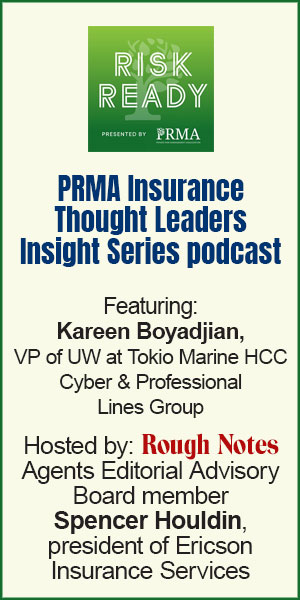TECHNOLOGY
BEFORE THE BOTS, DE-CLUTTER YOUR SOPS
Adding automation to inefficient processes wastes resources
By Violet Xu
Whether or not your life has been transformed by the Netflix series Tidying Up with Marie Kondo, we can all appreciate Kondo’s message: The Japanese guru of minimalism teaches that unnecessary, unwanted things can hold you back, and when you clear the excess away, your prized possessions—those that “spark joy,” as she famously says—can shine through.
Working in insurance, you can feel operational clutter all around you: from mounds of paperwork and clunky processes to duplicate data entry for systems that don’t talk to one another. The magic bullet we look for in technology and digitization to clean up the clutter isn’t so magical when you’re building on top of a mess. Cleaning up your agency’s operations not only reduces stress and waste, but it also prepares you for the digital initiatives that will shape the future of our industry.
For some people working in insurance agencies, RPA may feel like a threat to their jobs, yet we’ve seen a whole new career path emerge at the intersection of tech and service.
Inefficient operations are especially bad for robotic process automation (RPA), which is software that’s programmed to perform high-volume, repetitive tasks. Think bots. Yes, RPA can reduce operations handling time by 40%, and, yes, it’s a time saver that can bring relief to agencies feeling squeezed by the talent crisis. But you can’t start to think about adding these next-gen efficiency tools until you’ve gotten the rest of your standard operating procedures (SOPs) in line. An operational foundation built on clutter simply can’t support bots.
Here are some guiding principles on how to tidy up your operations and make the most of RPA.
 Take stock of where you are
Take stock of where you are
When Kondo begins working with clients, she has them pile up all their clothing in one heap. Seeing all the clutter at once helps her clients grasp the severity of the problem.
How do you take stock of your operations? Let me share one typical example: An agency wanted to improve its productivity, so it was considering RPA. But when you looked deeper, the organization lacked all standard performance metrics, including those for error rates, turnaround times and productivity levels. Without a clear notion of where its baseline was, the agency wouldn’t be able to determine whether it’s moving forward or backward and how fast. Setting a baseline is a mandatory first step for achieving any productivity goals.
Deep clean your procedures
If your goal is to become more efficient, you need to clean house first. It’s amazing how much progress you can make by drilling down on your procedures to make them leaner, cleaner and more standardized. Ask yourself:
- Are procedures uniform across your organization?
- Are they regularly updated?
- Could you save time by reordering tasks?
Besides improving your overall productivity, thoughtfully designed procedures are essential when working with bots. RPA gets tripped up much more easily than a human who can problem solve on the spot.
To give you some context, imagine one of the Roomba vacuum cleaner robots. With minimal furniture interrupting the bot, it zips around, quickly and efficiently. Place it in a room with clutter, however, and the process will take much longer and leave your poor Roomba snagged on a stray kids’ toy or banging its head against a wall.
Let’s bring it back to the agency setting: If your bot gets stuck on a task that has been changed since the procedure was written, how many hours or days might it take until someone notices?
Small procedural changes happen all the time—a carrier site switches where you enter the home address, a payment day moves from Tuesday to Thursday, and so on. They’re small changes, but bots need a consistent environment in which to function.
Unchecked, a bot may enter the wrong address or omit names from a list of renewals. How many E&O exposures might you rack up before detecting the issue? You need to set up lean procedures and constantly monitor them for new snags in the operational environment—because your bots can’t.
Clear the path for new careers
Your people must step up as the critical thinkers to audit and solve problems when the RPA-produced data doesn’t look right. Who on your team can step in to maintain your bots? Do you have the right people with both operations and tech skills?
For some people working in insurance agencies, RPA may feel like a threat to their jobs, yet we’ve seen a whole new career path emerge at the intersection of tech and service. One agency developed specific roles within the service teams to focus on automation only—bot managers, essentially. This maximized the agency’s RPA investments while also providing a career path in insurance for young professionals who embrace technology.
By tidying up your metrics and procedures, you’ll be able to clear a path for new bots and perhaps even better roles for your people.
The author
Violet Xu is vice president of service delivery at ReSource Pro, an operations solutions company serving the insurance industry. Violet oversees 4,000 employees across service centers in China, India and Lincoln, Nebraska. She holds a Certified Outsourcing Professional (COP) designation with the International Association of Outsourcing Professionals.





